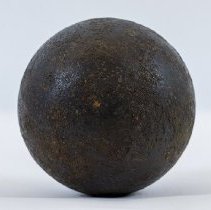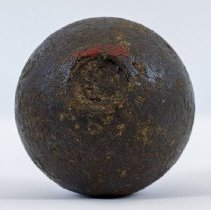
Art & Artifacts Record
Images


Metadata
Object Name |
Cannonball |
Collection |
Artifact collection |
Object ID |
M1985.388.1 |
Year Range from |
1775 |
Year Range to |
1830 |
Dimension Details |
3 3/4" H x 3 3/4" W x 3 3/4" D |
Description |
Iron cannonball with indentation on one side. |
Place Names |
Brooklyn (New York, N.Y.) Gowanus (New York, N.Y.) |
Subject Headings |
American Revolutionary War, 1775-1783 Ammunition Military weapons |
Personal and Corporate Names |
Wyckoff, Van Brunt, 1820-1889 |
Curatorial Notes |
The Long Island Historical Society (today BHS) opened in 1863, during a time of enormous social, cultural, and physical change in Brooklyn. A blood Civil War was ravaging the country. A great wave of immigration prompted Brooklyn's population to skyrocket. Urbanization and industrialization were transforming the city's built environment. With the future uncertain and reminders of the past fading away, LIHS's founders were eager to preserve remnants of Brooklyn's local history before it disappeared. This was particularly true of the city's Revolutionary War history. Today, BHS possesses a unique collection of Revolutionary War family heirlooms, found objects, and relics that together provide a window into the history of the war itself, and also how later generations commemorated it. In 1865, Brooklynite Van Brunt Wyckoff presented this cannon ball to LIHS. He discovered it with a cache of eighteenth-century ammunition near the block between 16th and 17th Streets and 4th and 5th Avenues (today in the Brooklyn neighborhood of Gowanus). A letter, now in BHS's accession records, documents Wyckoff's assumption after unearthing these artifacts that the British army had lost them during the Battle of Long Island. Today, a section of the Brooklyn-Queens Expressway passes over this block. |
